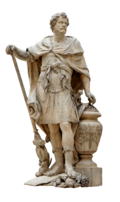| Second Battle of Nola | |||||||
|---|---|---|---|---|---|---|---|
| Part of the Second Punic War | |||||||
 Plan of the second battle of Nola (215 BC) | |||||||
| |||||||
| Belligerents | |||||||
| Carthage | Roman Republic | ||||||
| Commanders and leaders | |||||||
| Hannibal Hanno | Marcus Claudius Marcellus | ||||||
The Second Battle of Nola was fought in 215 BC between Hannibal's army and a Roman force under Marcus Claudius Marcellus. [1] [2] It was Hannibal's second attempt to seize Nola after a failure the year before. He was again repelled and would make one more, also unsuccessful attempt the next year. For the Romans, it was a crucial success against Hannibal's army and gave them hope that they could win the war.
